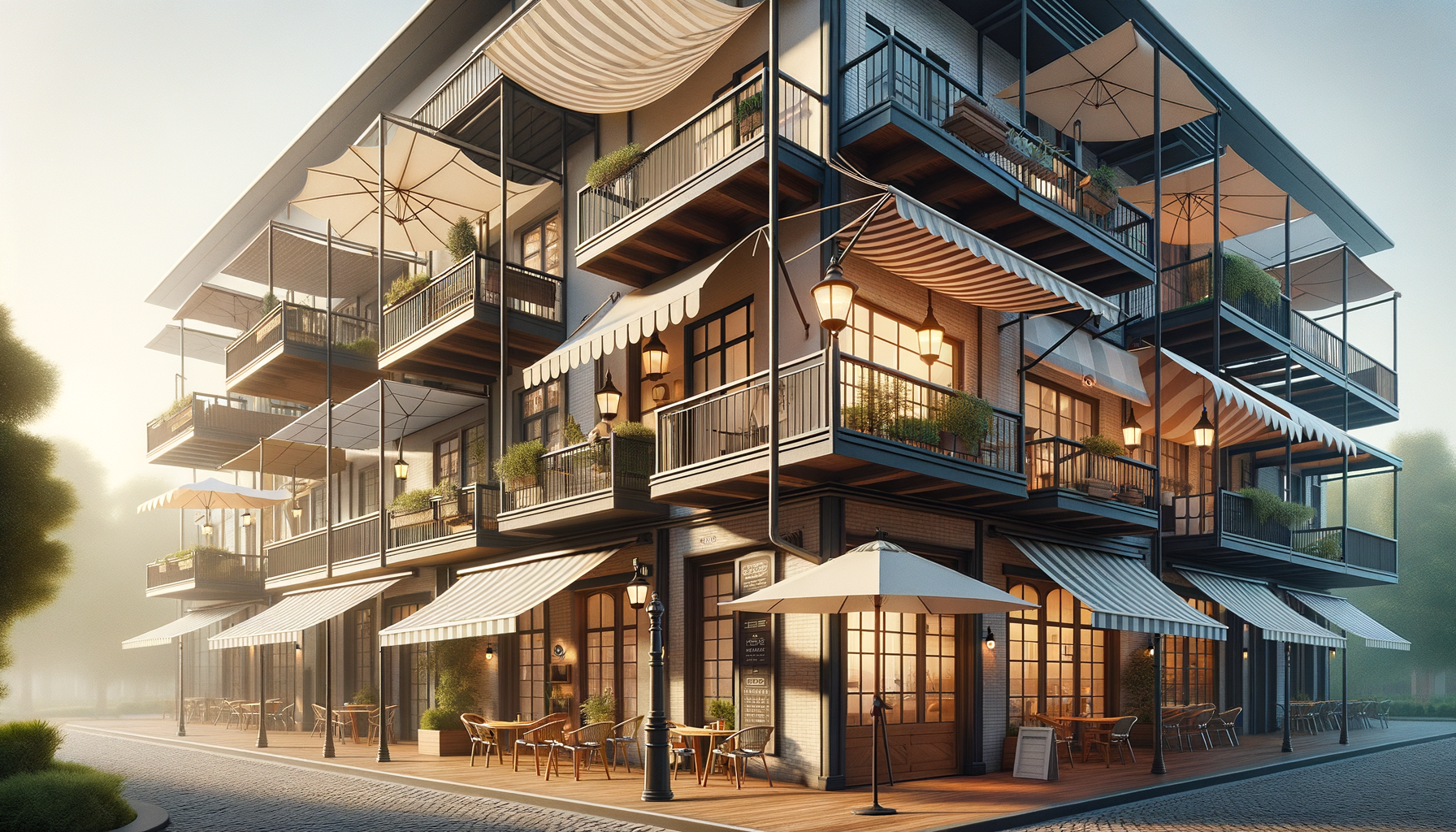Introduction to Awnings and Overhangs
Awnings and overhangs have long been appreciated for their dual role in enhancing both the functionality and aesthetic appeal of buildings. These architectural elements serve as a shield against the elements while adding a dash of elegance to any structure. Whether installed over windows, doors, or patios, they offer an effective solution to manage sunlight, rain, and even snow. Their versatility and charm make them a favored choice for homeowners and businesses alike.
The Practical Benefits of Awnings and Overhangs
From a practical standpoint, awnings and overhangs are invaluable. They provide shade, reducing heat gain inside the building. This can lead to significant energy savings, as less air conditioning is required to maintain comfortable indoor temperatures. Studies have shown that awnings can reduce solar heat gain by up to 65% on south-facing windows and 77% on west-facing windows.
Moreover, these structures protect against rain, allowing windows and doors to remain open during light showers without the risk of water damage. This ventilation can improve indoor air quality, making spaces more pleasant and healthier. In addition, overhangs can protect exterior walls and window frames from the elements, extending their lifespan and reducing maintenance costs.
- Reduces energy costs
- Protects against rain and weather damage
- Improves indoor air quality
Aesthetic Appeal and Design Versatility
Aesthetically, awnings and overhangs offer a wealth of design possibilities. They can be crafted from various materials, including fabric, metal, and wood, each offering a distinct look and feel. The choice of color, pattern, and style can complement the architectural style of the building, enhancing its curb appeal.
For instance, a brightly colored fabric awning can add a touch of whimsy to a storefront, attracting customers and creating a welcoming atmosphere. On the other hand, a sleek metal overhang can lend a modern, industrial edge to a contemporary home or office building. The design options are virtually limitless, allowing for a high degree of customization to meet individual preferences and needs.
- Offers diverse material and design options
- Enhances curb appeal
- Allows for high customization
Environmental Impact and Sustainability
In today’s environmentally conscious world, the sustainability of building materials and designs is of paramount importance. Awnings and overhangs contribute positively to environmental sustainability. By reducing the need for artificial cooling, they help decrease energy consumption and, consequently, carbon emissions.
Additionally, many modern awnings are made from sustainable materials that are designed to last, reducing waste. Some are even equipped with solar panels, harnessing the sun’s energy to power lighting or small appliances. This integration of renewable energy technology not only enhances the functionality of awnings but also aligns with global efforts to promote green building practices.
- Reduces energy consumption
- Supports sustainable building practices
- Can incorporate renewable energy technology
Choosing the Right Awning or Overhang for Your Space
Selecting the right awning or overhang involves considering several factors, including the building’s architecture, the climate, and the intended use of the space. For instance, in areas with heavy rainfall, a more robust, waterproof material may be necessary to ensure longevity and effectiveness.
The orientation of the building also plays a crucial role. South and west-facing windows benefit significantly from awnings, as these directions receive the most intense sunlight. Additionally, the size and shape of the awning should be proportionate to the building to maintain aesthetic balance while providing adequate protection.
Ultimately, the choice should reflect a balance between functionality and design, ensuring that the structure not only serves its practical purpose but also enhances the overall look and feel of the property.
- Consider building architecture and climate
- Evaluate orientation and sunlight exposure
- Balance functionality with aesthetic appeal
Conclusion: The Seamless Blend of Utility and Beauty
Awnings and overhangs are more than just architectural features; they are a testament to the seamless blend of utility and beauty. By providing protection from the elements and enhancing the visual appeal of buildings, they play a crucial role in modern architecture. As we continue to seek sustainable and aesthetically pleasing solutions for our living and working spaces, awnings and overhangs stand out as an exemplary choice, offering both practicality and charm.








